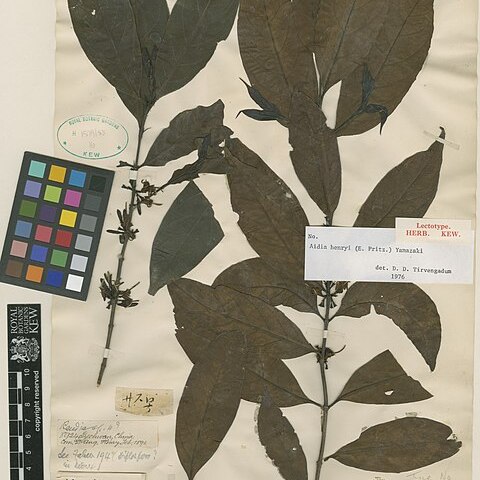Small trees or rarely (1 species) epiphytes. Leaves opposite, petiolate, in equal pairs or at flower-bearing nodes unequal or even one reduced to a deciduous scale; domatia sometimes present; stipules basally ± triangular, erect, acute to subulate, often deciduous. Flowers pedicellate, hermaphrodite, 5-merous, in unilateral apparently axillary inflorescences at every other node; inflorescences lax or condensed cymes up to 7 cm. long, few–many-flowered, subsessile or pedunculate; bracts small, often deciduous. Calyx-tube ovoid or turbinate; tubular part of the limb well-developed; lobes reduced or at least not over 3 mm. long. Corolla white, yellow or green, the central part sometimes red; tube cylindrical, with throat hairy; lobes contorted, overlapping to the left, acute. Stamens exserted, the filaments inserted in the upper part of the throat; anthers sagittate; pollen grains simple. Ovary 2(rarely–3)-locular, each locule containing a peltate hemispherical many-ovuled placenta; style exserted, developed into an oblong striate club of 2 adhering lobes. Fruit globose, small, marked with a circular scar left by the deciduous calyx-limb; seeds numerous.
Leaves opposite, petiolate, in equal pairs or, at flower-bearing nodes, unequal or even one reduced to a deciduous scale; domatia sometimes present; stipules basally ± triangular, erect, acute to subulate, often deciduous.
Inflorescences unilateral, apparently axillary, and produced at every other node (TAB. 75/7), of few-to many-flowers in lax or condensed subsessile or pedunculate cymes up to 7 cm long; bracts small, often deciduous.
Ovary 2(rarely 3)-locular, each locule containing a peltate hemispherical many-ovuled placenta; style exserted; pollen presenter an oblong striate club of 2 adhering lobes.
Corolla white, yellow or green, the central part sometimes red; tube cylindrical with throat hairy; lobes contorted, overlapping to the left, acute.
Stamens exserted, the filaments inserted in the upper part of the throat; anthers sagittate; pollen grains simple.
Calyx tube ovoid or turbinate; limb-tube well developed; lobes reduced or at least not more than 3 mm long.
Fruit globose, small, marked with a circular scar left by the deciduous calyx limb; seeds numerous, free.
Flowers pedicellate, hermaphrodite, 5-merous.
Small trees or rarely (1 species) epiphytes.

